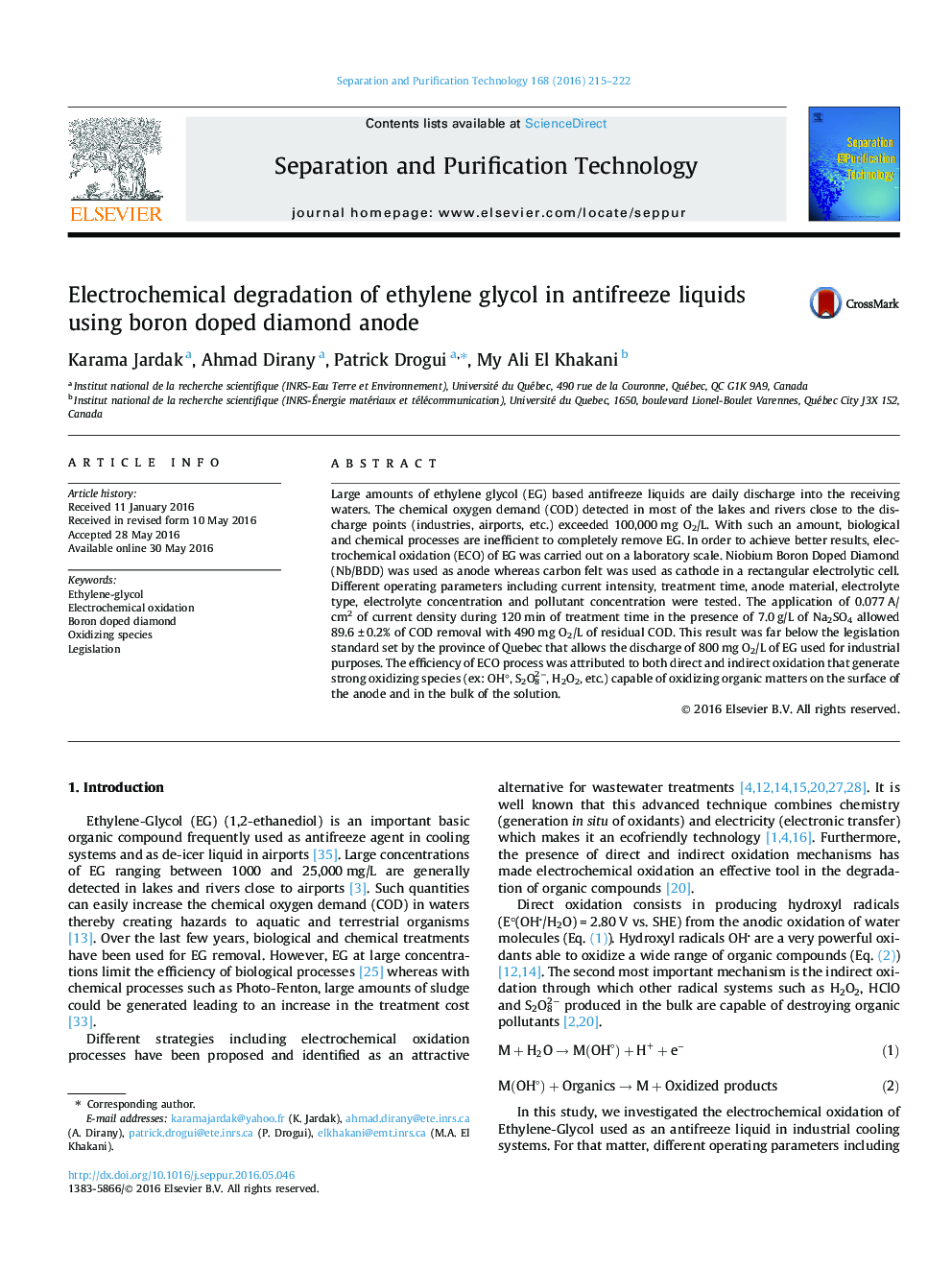| کد مقاله | کد نشریه | سال انتشار | مقاله انگلیسی | نسخه تمام متن |
|---|---|---|---|---|
| 640060 | 1456952 | 2016 | 8 صفحه PDF | دانلود رایگان |
• Electrochemical oxidation of EG was carried out using boron doped diamond anode.
• The degradation of EG was mainly attributed to direct anodic oxidation.
• The best performance of EG degradation was recorded using Na2SO4 and 0.077 A/cm2.
• Under the best conditions, 89.6 ± 0.2% of COD was removed after 120 min of treatment.
Large amounts of ethylene glycol (EG) based antifreeze liquids are daily discharge into the receiving waters. The chemical oxygen demand (COD) detected in most of the lakes and rivers close to the discharge points (industries, airports, etc.) exceeded 100,000 mg O2/L. With such an amount, biological and chemical processes are inefficient to completely remove EG. In order to achieve better results, electrochemical oxidation (ECO) of EG was carried out on a laboratory scale. Niobium Boron Doped Diamond (Nb/BDD) was used as anode whereas carbon felt was used as cathode in a rectangular electrolytic cell. Different operating parameters including current intensity, treatment time, anode material, electrolyte type, electrolyte concentration and pollutant concentration were tested. The application of 0.077 A/cm2 of current density during 120 min of treatment time in the presence of 7.0 g/L of Na2SO4 allowed 89.6 ± 0.2% of COD removal with 490 mg O2/L of residual COD. This result was far below the legislation standard set by the province of Quebec that allows the discharge of 800 mg O2/L of EG used for industrial purposes. The efficiency of ECO process was attributed to both direct and indirect oxidation that generate strong oxidizing species (ex: OH°, S2O82−, H2O2, etc.) capable of oxidizing organic matters on the surface of the anode and in the bulk of the solution.
Journal: Separation and Purification Technology - Volume 168, 10 August 2016, Pages 215–222
